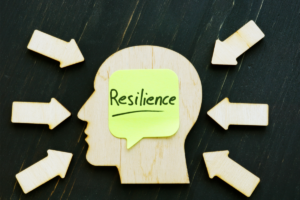
Navigating Stress and Pressure in the School Environment: Practical Tips for Educators
In the bustling world of education, where demands are high and resources often scarce, managing stress and pressure becomes a crucial skill for educators. Teachers and administrators alike face a myriad of challenges, from meeting academic standards to supporting students’ emotional well-being. However, amidst these challenges lies the opportunity for growth, resilience, and effective pedagogy. This article aims to provide practical tips for educators to navigate stress and pressure in the school environment, fostering a culture of well-being and productivity.
Understanding Stress and Pressure in Education
Before diving into strategies for managing stress, it’s essential to understand the nature of stress and pressure in the educational context. Educators often experience stress due to heavy workloads, tight deadlines, challenging student behaviors, and external expectations from parents, administrators, and policymakers. Moreover, the emotional investment in students’ success can amplify stress levels, leading to burnout and decreased job satisfaction.
Pressure in education stems from various sources, including standardized testing, curriculum mandates, and accountability measures. The constant pressure to perform can leave educators feeling overwhelmed and undervalued, affecting their mental health and professional efficacy. Recognizing these underlying factors is the first step towards developing effective stress management strategies.
Practical Tips for Pedagogues
- Prioritize Self-Care: Just as educators prioritize the well-being of their students, they must prioritize self-care. Encourage regular exercise, healthy eating, and sufficient sleep among staff members. Incorporate mindfulness practices, such as meditation or deep breathing exercises, into daily routines to reduce stress levels.
- Set Boundaries: Establish clear boundaries between work and personal life to prevent burnout. Encourage educators to disconnect from work-related emails and tasks during non-working hours. Encourage leisure activities and hobbies outside of school to promote work-life balance.
- Delegate Responsibilities: Delegating tasks and responsibilities can alleviate the burden on individual educators. Distribute administrative tasks, such as paperwork or data entry, among staff members to streamline workload management. Collaboration and teamwork can foster a sense of support and camaraderie among colleagues.
- Effective Time Management: Teach educators strategies for effective time management to maximize productivity and reduce stress. Encourage the use of planners, calendars, and digital tools to organize tasks and prioritize responsibilities. Break larger tasks into smaller, manageable steps to avoid feeling overwhelmed.
- Promote Flexibility: Cultivate a culture of flexibility within the school environment to accommodate individual needs and preferences. Allow for flexible work schedules or telecommuting options when feasible. Provide opportunities for professional development and growth to empower educators in their roles.
- Foster Support Networks: Encourage the formation of support networks among educators to share experiences, resources, and strategies for coping with stress. Facilitate peer mentoring programs or support groups where educators can seek guidance and encouragement from their colleagues.
- Celebrate Achievements: Recognize and celebrate the achievements and contributions of educators to boost morale and motivation. Organize staff appreciation events, such as luncheons or awards ceremonies, to acknowledge their hard work and dedication. Positive reinforcement can strengthen team cohesion and morale.
- Seek Professional Help: Encourage educators to seek professional help if they are struggling to cope with stress or pressure. Provide access to counseling services or employee assistance programs to support their mental health needs. Normalize seeking help and destigmatize mental health issues within the school community.
- ChatGPT
Continual Improvement
Managing stress and pressure in the school environment is an ongoing process that requires continual reflection and adaptation. As educators implement these practical tips, they should regularly assess their effectiveness and make adjustments as needed. Additionally, fostering open communication and soliciting feedback from staff members can identify areas for improvement and innovation.
Embracing a Growth Mindset
Embracing a growth mindset is essential for navigating stress and pressure in the school environment. Encourage educators to view challenges as opportunities for growth and learning rather than insurmountable obstacles. By fostering a growth mindset among staff members, schools can cultivate resilience, creativity, and adaptability in the face of adversity.
Advocacy and Policy Change
Addressing systemic issues that contribute to stress and pressure in education requires advocacy and policy change at the local, state, and national levels. Educators can advocate for policies that prioritize student well-being, reduce standardized testing, and provide adequate resources and support for schools. By actively engaging in advocacy efforts, educators can contribute to broader systemic change that promotes a healthier and more supportive school environment.
Conclusion
Managing stress and pressure in the school environment is a multifaceted endeavor that requires collaboration, resilience, and proactive strategies. By prioritizing self-care, setting boundaries, and fostering a culture of well-being, educators can effectively navigate the challenges of their profession while promoting their own mental health and professional efficacy. By implementing practical tips, embracing a growth mindset, and advocating for systemic change, pedagogues can create a supportive and empowering school environment where both educators and students can thrive. Together, we can build a brighter future for education—one that prioritizes the well-being and success of all members of the school community.
Marlin Cornella
This topic is really interesting.














1 comentário